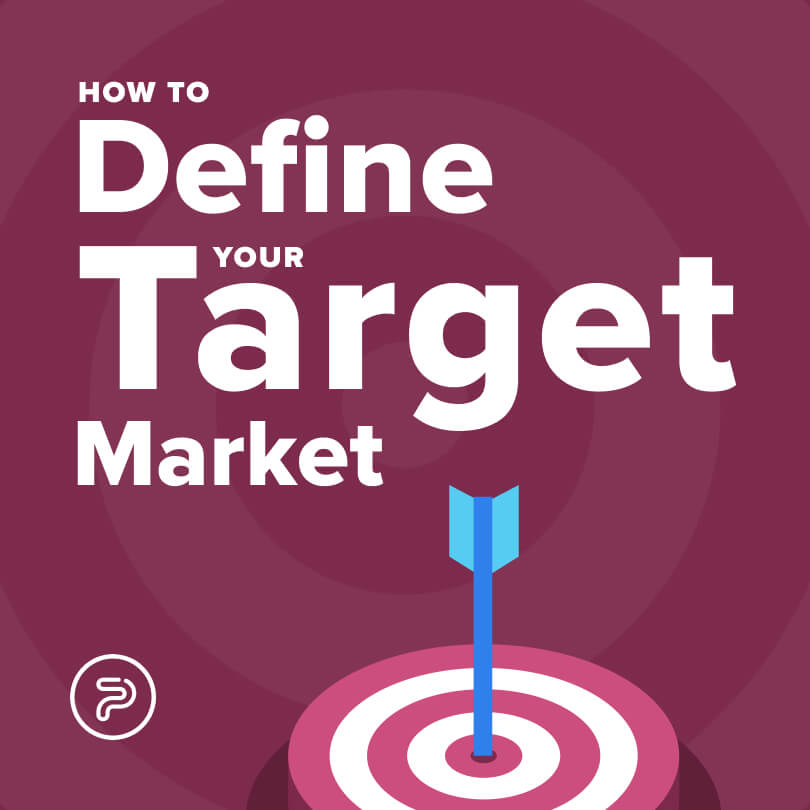When it comes to the digital arena and good marketing practices in general, the best of the business will usually tell you that marketing isn't that difficult at all. All you have to do is keep up with the trends and constantly experiment.
However, if you’ve spent any time actually trying to tell something online, you probably know by now that sometimes, digital marketing is more like rocket science than a casual walk in the park. Setting up a digital powerhouse that converts, sells, and spreads the word about your brand is a complex and intricate process with several key factors to keep in mind.
One of those is how to define your target market and your target audience. Do you know your target audience and market? Chances are, if you don’t know the answers to these questions right off the bat, you might not be playing the digital game to your fullest potential.
Even worse, if you’ve answered “everyone” or “a large group of people” you might be even facing more serious problems than you’d previously thought.
Why? Well, the problem with the digital world is, if you want to target everyone, chances are, you will end up targeting no one.
Now, you might be thinking about some of the big dogs like Amazon or Alibaba. They virtually target and sell to everyone, right? Well, right.
However…
Let’s see the case of Amazon. They started out selling only books, exclusively online from 1994 to 1998. That sounds like a very specific audience in our book, even today, more than two decades later. So, to put it into another perspective, Amazon started with a specific target market, and the online giant only started to grow exponentially after Bezos managed to establish a successful company that runs smoothly. And that strategy earned Amazon the right – again, after more than two decades later – to target more or less everybody with an internet connection.
So, do you see now where we’re getting at?
In this post, we will strive to give you a better idea of just how important it is to define your target market and audience and enable your own business to make it big in the digital realm.
About Target Markets
By definition, a target market is a specifically defined segment of potential consumers that a business looks to cater to with their specific services or products.
Defining your target market is a pivotal step in brand development, product creation, service development, and marketing efforts overall. Additionally, your target market will typically contain the end-user of your product or service as well.
This is a vital part of every business plan. In order to get your products out there and start making a name for yourself, you need to define a specific group of people and start selling to them. If you don’t, you end up running the risk of developing several products and service packages that target everybody but actually fully meet the needs of no one.
As such, you might end up with your products never leaving the shelves.
When you’re starting out with segmenting your target market, you can start off several ways and with several methods.
You can segment your market by demographics, geography, or/and psychographics.
Take the example of one of the largest businesses in the world, McDonald’s.
Over the years, they’ve managed to create (and cater to) multiple target markets and audiences.
For starters, look at their menus. You will see lots of consistencies across the board, but will also see area-specific foods in different parts of the United States, not to mention, around the world as well.
On the other hand, they have well-defined strategies to cater to their customer bases as well. Look at how they market their brand to children. You have dedicated play areas, dedicated meals with toys, and so on. Lately, as millennials became the largest generation in the US, the brand freshened up its lineup with healthier options to cater to the latest trends and customer expectations.
About Target Audiences
Professionally speaking “target audience” is a narrower term than “target market” it refers to the group of people your target thanks to marketing messaging. It’s a group with the potential of responding positively to your brand’s vision and message.
Simply put, they might not be the actual people who will end up buying your product, but they are the group that you will directly market to.

In order to become effective in communicating with your target audience, you need to familiarize yourself with them, understand their needs, desires, and who they are. By learning about them and getting to know them, you will also have the chance to educate them about your products/services and about the advantages of doing business with you.
Target Market VS Target Audience
By now, that much is clear that these two terms are pretty similar, overlapping even. However, there are a few key differences between the two, which can be observed through the practical implications each of these terms will have on your business.
- The target market impacts every decision a small business makes. You develop your services and products to meet the needs of your target market. Everything from packaging and pricing should appeal to your target market along with structuring the entire sales process around the target market’s shopping habits.
- The target audience, on the other hand, will only impact specific marketing-related decisions.
There are also cases when your target market and target audience are actually the same. In this case, the audience you target with your marketing message is the same group you defined as your target market.
We know it’s a little complicated, but here’s a good example that might help clear things up a bit. Let’s say, there’s a yoga leggings brand, that identifies its target market as single women between the ages of 24 and 34. These ladies are also frequent gym-goers and are interested in yoga or either in some form of fitness.
In such an example, the target market and the target audiences are pretty much the same. But, to makes things even more specific, marketers may decide to use either Facebook or Instagram advertising to reach their target market.
If so, the target audience may be further defined as FB/IG users who follow different brand pages or accounts, recently made purchases from similar brands online, and live in certain parts of the country.
As you can see, things can get pretty specific and interesting.
The Importance and Power of Targeting
If you’ve spent a little time in the digital arena, you’ve probably come across several strategies suggesting that casting a wide net is the best way if you want people to get to know your product.
Well, this can make sense, however, the most successful businesses know that they need to make themselves visible to those consumers who will most likely buy what they have to sell.
This is why target advertising usually yields better results than non-targeted ads.
Apart from that, having a clearly defined target market enables you to create a product or service that’s perfectly tailored to your users’ needs and desires. This will enable you to garner mostly positive feedback. Additionally, with a well-defined target audience, you can create a marketing campaign that perfectly assesses your potential consumers’ every need, interest, and even emotion.
If you manage to create the right marketing messages that really resonate with the people you are trying to sell your product, you will see better conversion rates and an overall stronger brand presence both online and offline.
Identifying How to Define Your Target Market
In this section, we will go over the market segments you should be targeting to reach your full potential.
Look at the key benefit your business manages to provide
If you get this right, your target market will reveal itself. Your ultimate goal is to satisfy your customers’ needs and desires, and that’s all about knowing what to make.
Simply put, you need to give a clear and definite answer to the questions below:
- What problem do your products solve?
- What needs do your products/services meet?
- What desires do they fulfill?
So, instead of focusing on the actual features of your products, try to focus on the benefits they will provide the customers who’ll buy them.
If you sell gym equipment, don’t brag about the high-quality materials, rather, focus on how you help people to get fit and to lose weight.
Or, do you remember the first iPod commercial? Apple didn’t market it as a device that had a storage space of 1GB. Instead, they marketed it as “1,000 songs in your pocket”.
Once you’ve managed to identify these benefits, you should have a better idea of who needs your products or services.
Refining the target market
Now, you pretty much know (or at least, have a general idea of) who will benefit the most from using your products/services. As such, it’s time to narrow down the market a bit and be even more specific.
As a starting point, define the demographics of your market.
This is a specific group among the population, which you can define by age, location marital status, occupation, education level, income level, gender, and so on.
Next up, try to define the psychographics of the people of your target market. Focus on psychological attributes, like behavior, lifestyle, interests, values, etc.
After you’re done with these, you should have a clearly defined buyer persona.

Staying objective
Try to avoid assumptions. You might think that your product/service will be a total hit on the market. You can’t just assume that, you need to put in the necessary legwork. That means both research and testing.
Why?
The sad truth is, a lot of people will tell you that they’d gladly buy your product but in the end, what matters is the number of consumers who actually purchase it.
So, while research is immensely useful, no doubt about that, creating a minimum viable product is also paramount to be sure if there’s an actual market need for it.
Evaluating market segments
Now, that you actually know that you will be able to sell your product, you need to assess whether this is a market worth serving or not.
To do so, ask yourself these questions:
- Is the market large enough to ensure sustainability?
- Does the market segment has the financial background to buy the product?
- Will I be able to retain my customer base or constantly look for new ones?
- What about the competition?
- Is there any competition at all?
- If not, why?
- If there is, why should the customer buy from us instead of them?
- How accessible is this market?
Again, conducting research will be handy, but it won’t take you all the way. To get definitive answers to these questions, you will need to conduct real tests.
Other Useful Tips
Before we conclude this topic, here are a handful of pointers that can help you do a better job ad identifying both your target market and audience.
- Check out website analytics: If you’re already selling, use Google Analytics to gain insight about your visitor’s age group, gender, which keywords they used, which sites they visited before yours, and how much time they’ve spent on your web pages. This can give you a better idea of their online habits which may help you in creating better-targeted ads.
- Conduct customer interviews: Is there a more straightforward way about learning about your customers than actually asking them? You can conduct interviews in person, through the phone, email, polls, online surveys, either on your site or social pages. If you do it on your website, use forms with mandatory fields for certain categories (like age, for example).
- Ask your sales team: They probably hear a lot of different questions from your potential customers and have lots of experience with your returning buyers.
- Study your competition: We’ve already touched bases on this one but try to be thorough as possible. Look at their websites, social pages, posts, and ads. See whom they are targeting. Better yet, find one of their customers and ask them why they are choosing to do business with your competitors.
Putting It All Together
Defining your target markets and audiences is pivotal to the long-term sustainability and success of your business.
You need to put in the necessary legwork to uncover whom your business serves and why they should choose you.
Remember, trying to target everyone can be a death sentence. When there are too many moving targets, the chance of missing all of them can increase dramatically. When you only have a few of them, it might be harder to actually get them in your imaginary marketing crosshairs, but it will be a lot easier to focus solely on them.
Oh, and don’t forget testing!





